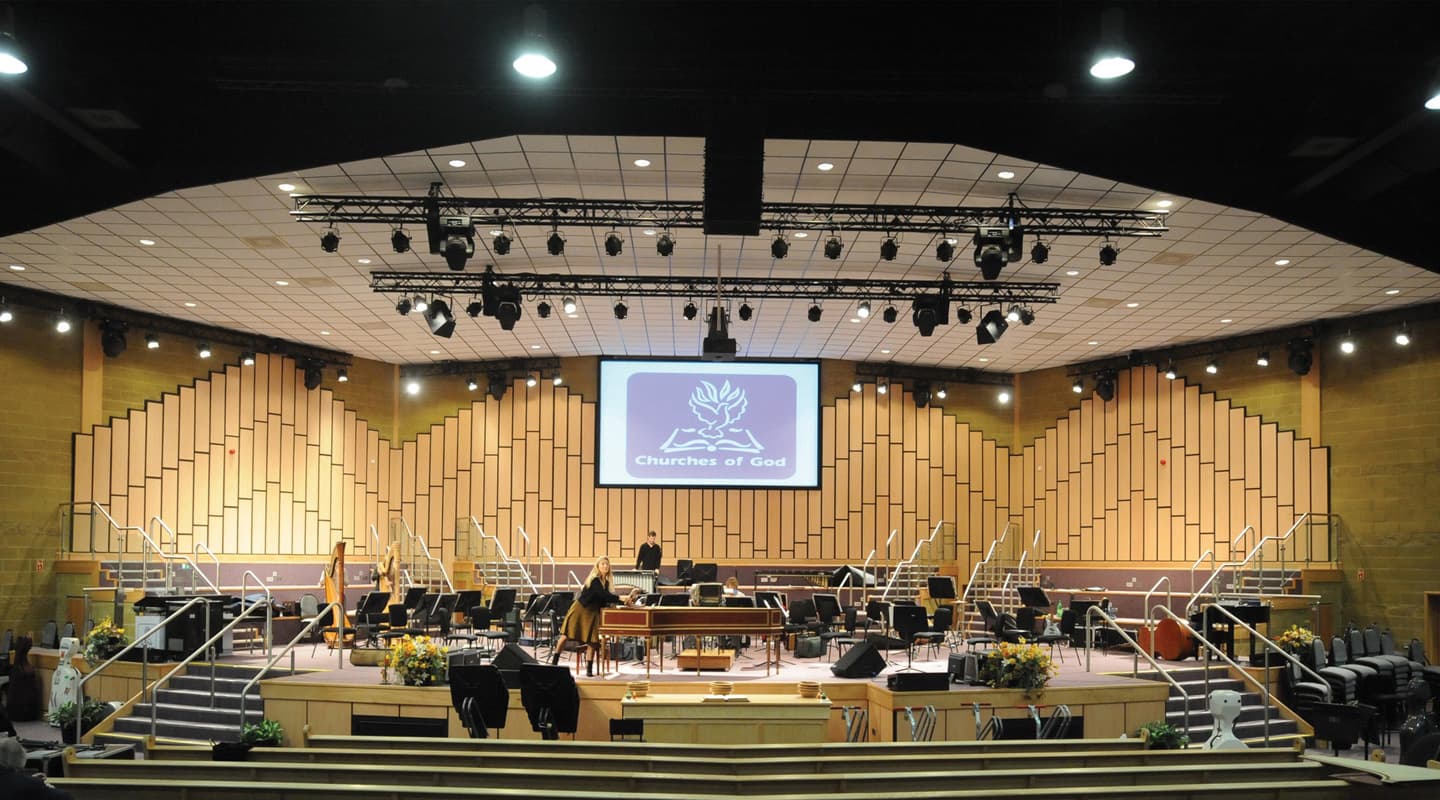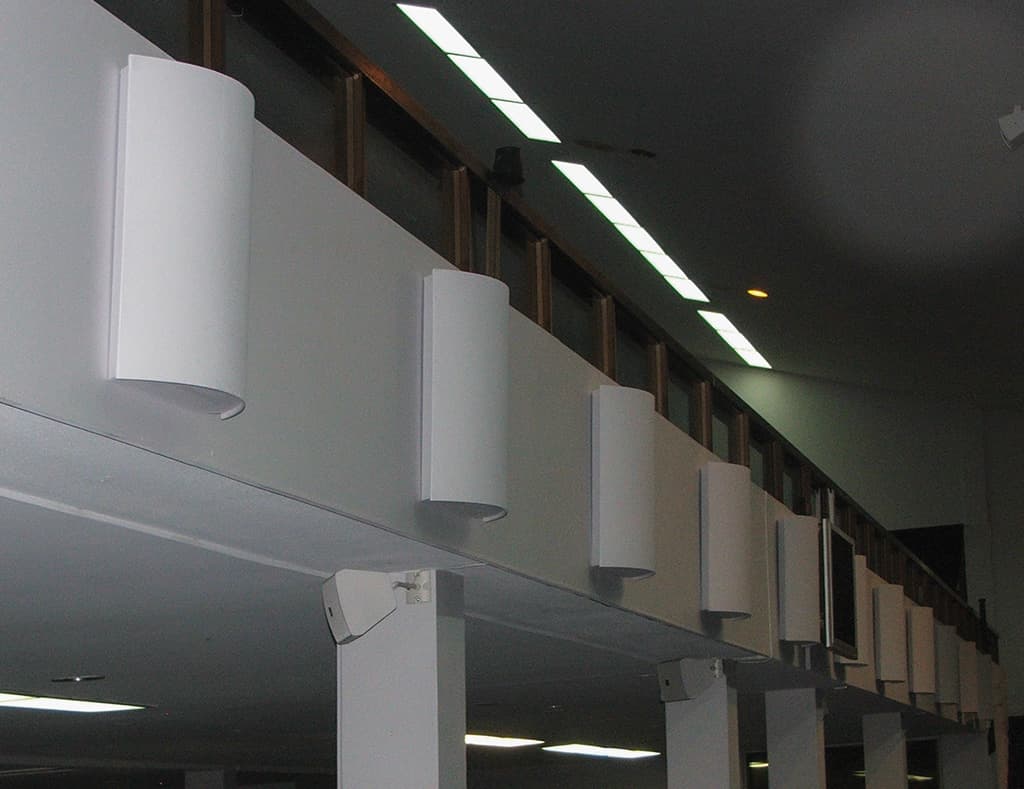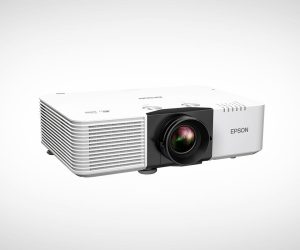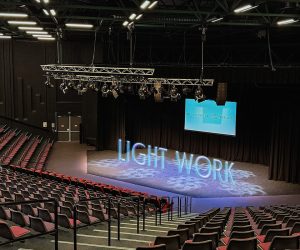
Unholy Racket
Churches present a significant acoustic challenge.
Text:/ Andrew Steel
In the course of my work I’m lucky enough to get involved in a variety of interesting projects. You’ll be unsurprised to hear that I don’t put road traffic noise surveys or silencing exhaust stacks in this category. The acoustics projects I get a kick out of involve places where you listen for content, like music or speech, rather than noise. This means I spend my time working on the acoustics in recording studios, theatres, home theatres, music venues etc, each with their own individual requirements and acoustic solutions. However, there is a type of venue that combines all the demands I’ve just listed. This venue wants more than live bands, movie presentations and recorded music playback. They also want a venue suitable for choirs, spoken presentations, group singing and slide shows. Of course, I’m talking about churches!
Churches (or ‘houses of worship’, to be fair to all those synagogues, mosques and temples out there) are very acoustically demanding simply because of the wide variety of activities undertaken in them. This also means that if you love engineering they’re great projects to work on. Why? Good engineering is about solving complex problems with the simplest possible solution and can be very rewarding. But, it also means they are very difficult to get right. In fact, if you want a good example of ‘acoustics gone wrong’ then you generally only have to go as far as your local church.
TAKE ADVICE
My advice to anyone building, renovating or upgrading the acoustics in a church is to be very careful about who they engage to do the acoustic design. Make sure they’re qualified, experienced, and understand all of the sound sources that will need appropriate acoustics. Get references from other similar customers and actually call them. Certainly do not leave it to the builder, the architect or a member of the congregation who has a home studio. Don’t even engage an engineer who can’t explain what the congregational experience is about. At a minimum get a brief or a proposal that explains how the acoustics will work for each type of activity. Do not accept something that is designed by specifying reverberation times (’RT60’ or the time it takes for sound to decay by 60dB once the source of sound has stopped) suitable for certain size rooms, this ‘cookie cutter’ approach should act a big red flashing light (probably accompanied by an air-raid siren) screaming “we don’t appreciate what a house of worship is all about”. Getting the acoustic balance right in a church isn’t prescriptive, it’s about experience and acoustic know-how.
So if there isn’t a ‘right’ reverb time to aim for and the old approach of adding absorption until you get that ‘right’ time won’t work… what to do? The first thing to understand is that the whole point of a church is to engender the feeling of community – being part of something. Distractions of any kind detract from feeling ‘involved’ and acoustic distractions are as bad as any and take many forms. Echoes, flutter echoes, uneven audio coverage, long time reflections (especially back to the stage), poor speech intelligibility and even not enough reverb can all cause a person to feel distracted and not be completely immersed in the worship experience. Sadly, this situation quite often causes people to not return the next weekend. Ministers see the congregation thinning often without knowing why.
NOT JUST ABSORPTION
In a nutshell, what works really well, is a room with no harsh, long or repetitive reflections, but one that is not too dead either. This may seem self contradictory because the common approach is to use absorption to fix the listed problems. As more absorption is used to reduce reflections, the room gets deader and this is usually catastrophic. It may work for the band and movies but will make a choir or congregational singing very isolated and detached.
The way out of this contradiction though, is a judicious combination of absorption and diffusion. Thankfully diffusion is very easy to apply and quite robust in terms of where you put it and how much you need. It is used to diffuse or disperse reflections, that would otherwise be problematic, without removing the energy from the room. Sounds too easy really, and it is!
The way to use diffusion in a place of worship is to identify places, usually flat surfaces that will cause problematic reflections, at the start of designing the acoustics. These surfaces are commonly the rear wall or walls (especially concave curved ones) and side walls in wide rooms. These surfaces allow reflections that return after a long delay or reflections that can travel back and forth repetitively, both of which are undesirable. (Side walls in long thin rooms are not always bad as they can offer short time reflections that can reinforce the sound for the listener.) Diffusers applied in these places will break up troublesome reflections while maintaining the acoustic energy in the room.
“”
what works really well, is a room with no harsh, long or repetitive reflections, but one that is not too dead either

Here Endeth The Lesson
When we first moved into the new building we wanted it to be as good for sound as possible, so we made sure we had an acoustic tile ceiling, carpet and upholstered seating. This however did not perform as we expected and we very quickly discovered we had a huge high-end reverberation problem. There were massive echoes and pings across the room and the snare bounced sharply back to the stage. People actually commented on how bad it was! We looked for advice and the acoustician [Ultrafonic] was able to quickly determine the problem and tell us what we need to do to fix it – install diffusers on the side walls. After we installed the diffusers the problem was instantly solved. The sound became clear and evenly spread around the room, and no one has since complained about the sound – no news is good news… very good news in this case. Even the pastor commented on how much the sound had been improved.
David Dixon, Nambour Baptist Church
REMOVE REVERB TO TASTE
Once this has been done, absorption can be used in other places to bring the RT60 to a level that feels good – it does not need to conform to some formula or standard based on the room size. Even the Australian Standard for Acoustics’ ‘Recommended Design Sound Levels & Reverberation Times for Building Interiors’ (AS 2107:2000) does not recommend anything other than “specialist advice be sought for these spaces”. At this point, absorption is used on surfaces like the floor (carpet) and ceiling (acoustic tiles) to get a comfortable RT60. This is where experience counts and there isn’t much value in complex measurements or calculations. It is a matter of knowing how much to use and where to put it since the bad reflections are gone and the energy in the room is good and probably a bit high. Just the right amount and correct placement is needed to get the energy to the right level. On the other hand, the usual practice of applying bulk absorption to the floor and ceiling first isn’t recommended as reflections in the horizontal plane will get worse as they no longer ‘crash’ into those in the vertical plane and will sound louder. In other words, this is a final adjustment, not the initial step.
With absorption and diffusion applied in the right combination, speech, band music, choral singing, congregational singing and recorded music will all sound good in the room. People will feel involved in the congregational singing and yet talking with someone nearby will be easy. We get so many calls from ministers who can’t talk at a podium because the rear wall reflection is so bad, but if the above advice is followed, this is no longer an issue. The same goes for bands on stage – that horrible ‘slap’ off the back wall is gone but the room is still nice and lively. There may be some small problems still to fix but the major work is all done. Depending on the arrangement of the band, instruments and speakers on stage, some absorption may be needed in that local area. Absorption behind and sometimes suspended above the stage is useful for just taming the local on-stage level somewhat. Too much absorption and you might rob the band of local feedback and the ability to hear itself so as to play as an ensemble.
HEAR THE GOSPEL
There are plenty of ways to integrate these acoustic treatments within the decor. The key, to state it again, is having a person with specific experience involved in the design from an early stage. A good acoustic consultant will appreciate the use of the space, be able to apply the treatments based on knowledge and experience, not just text book theories. They will be good at working with the architect, builder and church board to get the necessary treatments applied in the right way, within budget and with suitable aesthetics. The end result is the most multifunctional acoustic space possible, that affords the best possible experience to the congregation. This is clearly a job for a specialist and supports the core function of the church, so it is not one to skimp on.















RESPONSES